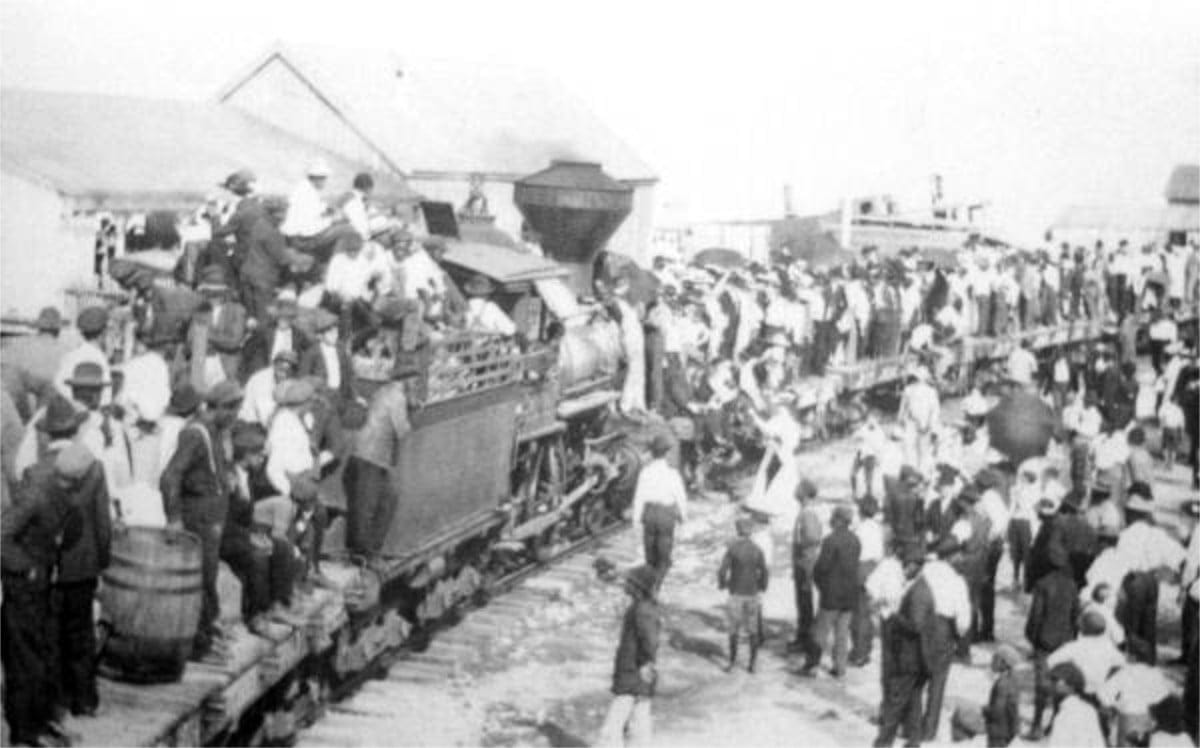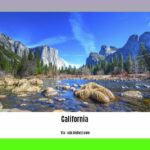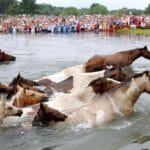Take a trip through time in the coastal town of Apalachicola, Florida. This place has seen it all, from Native American settlements to busy shipping days. Get ready to dive into the rich history of Apalachicola and uncover the secrets of this hidden gem on the Gulf Coast.
History of Apalachicola, Florida
Apalachicola, Florida, a name whispered on the salty breeze, holds a past as rich and deep as the bay it sits upon. More than just a sleepy coastal town, Apalachicola whispers stories of a vibrant past, a hub of maritime commerce and cultural exchange that helped shape Florida into the state it is today.
Imagine strolling through the heart of Apalachicola, where time seems to slow down. You’re met by historic squares, each brick and cobblestone echoing with the footsteps of generations past. These squares weren’t just places to pass through; they were the lifeblood of the community, likely hosting bustling marketplaces, lively social gatherings, and grand celebrations, all unfolding beneath the shade of ancient oaks. Today, these squares stand as poignant reminders of Apalachicola’s golden age – a time when its port thrummed with the energy of tall ships and international trade.
The story of Apalachicola’s squares is really the story of Florida’s own journey through time. Before the arrival of European explorers, indigenous people navigated these very waterways. Their presence, though not always visible, is woven into the fabric of the land. The arrival of the Spanish, and later the British, brought new waves of cultural influence, leaving behind architectural styles that still grace the town today. As you walk through the squares, you can almost see the layers of history unfolding before your eyes, a testament to the diverse people who have called Apalachicola home.
What’s truly remarkable is how fiercely Apalachicola cherishes its heritage. These squares aren’t just relics of the past left to crumble – they are vibrant testaments to a community’s commitment to its history. Recognizing their irreplaceable value, organizations like the National Trust for Historic Preservation have stepped in to help protect and preserve these treasures. But, it’s the passion of the locals, the generations of families who have called this place home, that truly keeps the spirit of Apalachicola alive.
Every corner you turn in Apalachicola holds the promise of discovery. Hidden courtyards beckon you to step back in time, while faded plaques whisper tales of forgotten moments. As you wander through the squares, imagine the murmurs of sailors from distant lands, the laughter of children chasing pigeons, and the grand speeches delivered by passionate orators. These squares aren’t just open spaces; they are vessels of memory, whispering stories of triumph, hardship, and the enduring spirit of a community.
But the story of Apalachicola doesn’t end there. Researchers and historians continue to delve into its past, unearthing new layers of history with each passing year. What we know now is just a fragment of a much larger story, one that’s still being written today. As you explore Apalachicola, remember that you’re walking through a living museum, a place where the past and present intertwine to tell a truly remarkable story.
What is Apalachicola, Florida famous for?
Apalachicola isn’t just another pretty town on the Florida coast; it has a charm all its own, thanks to a fascinating history and a connection to the water that runs deep. You’ve probably heard it called the “Oyster Capital of Florida,” and for good reason! Those pristine waters around Apalachicola Bay are like a magnet for oysters, and folks will tell you they’re some of the tastiest you’ll ever find.
But Apalachicola’s seafood scene is more than just oysters. Think succulent shrimp, fresh-off-the-boat fish, and a whole menu of seafood delights you can enjoy at local restaurants. It’s a seafood lover’s paradise!
Now, imagine strolling along the waterfront with the Apalachicola River flowing by. This isn’t just a river; it’s the lifeblood of the town. You’ll find charming shops, restaurants with views to die for, and historic buildings whispering stories of Apalachicola’s past.
Speaking of history, the heart of Apalachicola is its historic district. Picture grand Victorian homes, those intricately designed commercial buildings you only see in old movies, and the Trinity Episcopal Church with its iconic Ionic columns—a true testament to the town’s past. It’s like taking a step back in time!
Here’s a little cheat sheet of why Apalachicola is so special:
| What It’s Famous For | Why It Matters |
|---|---|
| “Oyster Capital of Florida” | Fresh, delicious oysters straight from Apalachicola Bay! |
| Seafood Haven | A foodie’s dream with a focus on fresh, local catches. |
| Riverfront Gem | Stunning views, vibrant atmosphere, and the heart of the town. |
| Historic District | Architectural treasures and a glimpse into Apalachicola’s past. |
What do locals call Apalachicola?
So, we’ve been talking about Apalachicola, this cool coastal city with its own special vibe. But have you ever wondered what the folks who actually live there call it? You know, like a nickname that only the “in-crowd” uses?
Well, it turns out they do! You’re likely to hear them call Apalachicola “Apalach.” It’s kind of like a shorthand, a way of saying “this is my place” with a single word. You can almost hear the affection in their voice when they say it, like they’re letting you in on a little secret. It suggests that “Apalach” is more than just a place on the map; it’s a feeling, a shared identity.
Imagine yourself walking down the street, soaking up the small-town charm, and you overhear someone say, “I’m heading over to Apalach for the afternoon.” It just sounds right, doesn’t it? Like it fits the easygoing rhythm of life there.
And who knows, maybe after spending some time in Apalachicola, you’ll find yourself using the nickname too!
What tribe was in Apalachicola?
Our exploration of Native American history leads us to the Apalachicola tribe, who were part of the larger Muscogee Creek confederacy. This suggests a tight-knit community of tribes, all speaking similar languages and sharing traditions. Nestled within this world, along the banks of the Apalachicola River, lived the Apalachicola people.
The name “Apalachicola” itself is intriguing, stemming from the Hitchiti language spoken within the Muscogee Creek world. While “People of the other side” is a rough translation, the exact “other side” remains a bit of a mystery.
These resourceful people relied heavily on the Apalachicola River, which served as their lifeline, They were masters at fishing its waters, skilled at hunting the game that roamed its shores, and adept at coaxing crops from the fertile land nearby. Villages bustling with life and community dotted the riverbanks.
However, their story, like many Native American tribes, took a turn with the arrival of Europeans. Imagine these newcomers, arriving with their ships and unfamiliar ways, eager to trade and claim land. This period marked a turning point for the Apalachicola, one that sadly led to their forced removal from their beloved riverbanks during the tumultuous time of the Indian Removal Act of 1830.
But the human spirit is incredibly resilient. Despite facing immense hardship and displacement, the Apalachicola tribe never let their culture fade. Even today, far from their ancestral lands, they hold onto the traditions and stories passed down through generations, keeping the spirit of the “people of the other side” very much alive.
It’s important to remember that what we know about the Apalachicola, and many other tribes, is still unfolding. Historians and archaeologists are constantly piecing together their story, uncovering new clues and insights. So, while we may not have all the answers yet, what we do know paints a picture of a resourceful, resilient people who continue to honor their heritage.
Was air conditioning invented in Apalachicola, Florida?
While not precisely in the form we know it today, the journey toward modern air conditioning has roots in Apalachicola, Florida, thanks to a doctor named John Gorrie who resided there in the 1800s.
Dr. Gorrie was a brilliant physician concerned about his patients suffering from yellow fever, a prevalent and dangerous illness at the time. Aware that cooler temperatures could potentially aid in recovery, he began experimenting with ways to lower the temperature in his hospital rooms. This led him to develop an ice-making machine – a remarkable invention for its time!
Before this, people relied on ice harvested from frozen lakes and ponds, or stored ice from the winter months. Dr. Gorrie’s machine could actually create ice through a specialized process. This marked a significant step toward modern air conditioning!
Sadly, Dr. Gorrie’s invention wasn’t immediately embraced. Some even dismissed it as a far-fetched idea. However, his groundbreaking work didn’t go unrecognized. In 1851, he was awarded the first-ever U.S. patent for mechanical refrigeration – a testament to his ingenuity!
It’s essential to remember that great inventions often undergo an evolution. While Dr. Gorrie’s machine wasn’t the air conditioner we know and love today, it laid the groundwork for everything that followed. His dedication to easing suffering and his innovative spirit sparked a series of discoveries that ultimately led to the air conditioning systems we rely on today.
Today, Apalachicola takes pride in honoring Dr. Gorrie and his remarkable achievements. You can even visit the John Gorrie Museum State Park, dedicated to sharing his story and showcasing his incredible inventions. It’s a fascinating glimpse into the early days of air conditioning and how one man’s quest to alleviate suffering transformed the way we live.
Why is Apalachicola called the Forgotten Coast?
Nestled quietly on the Gulf of Mexico, this slice of paradise bears the curious nickname “The Forgotten Coast.” How could such a beautiful place be forgotten? Well, several factors contribute to this intriguing moniker.
One primary reason might be its secluded location in Franklin County. Apalachicola marches to the beat of a slower drum compared to bustling cities. It’s like stumbling upon a hidden culinary gem – tucked away from the tourist traps, its charm is enhanced by its very seclusion.
However, Apalachicola wasn’t always a tranquil retreat. Back in the 1800s, it flourished as a bustling port city, a major player in the cotton trade. After the Civil War, its prominence waned as other ports rose to prominence, leaving Apalachicola in the shadows.
But don’t mistake this for a tale of fading glory. Apalachicola is more like a comeback story waiting to be told. These days, people are rediscovering its magic, drawn to its natural beauty, fascinating history, and irresistible small-town charm.
While the name “Forgotten Coast” might linger for its poetic allure, Apalachicola is anything but forgotten. It’s a sanctuary where time seems to slow down, where you can escape the ordinary and reconnect with the simple pleasures of life.
What is the cause of the problem in the Apalachicola Bay?
The oyster population in Apalachicola Bay has been facing difficult times. Sadly, there isn’t just one culprit, but rather a perfect storm of issues converging at once.
One major challenge is the limited flow of freshwater into the bay. Drought conditions have resulted in less water coming in from rivers and streams. This is a critical issue because oysters rely on freshwater to thrive. As freshwater decreases, the bay becomes saltier, putting stress on the oysters and making it harder for them to survive.
Another significant factor is over-harvesting. For many years, oyster harvesting wasn’t carefully regulated. This over-harvesting has weakened the overall ecosystem. Oysters function as natural filters, cleaning the water. Fewer oysters mean a decline in water quality, negatively impacting the entire ecosystem.
Pollution adds another layer to the problem. Runoff from storms and farms carries harmful substances, such as fertilizers and pesticides, into the bay. These pollutants act like junk food for algae, causing them to grow uncontrollably. These massive algal blooms block sunlight from reaching seagrass beds, which are vital underwater gardens providing food and shelter for marine life. When the algae die and decompose, they consume vast amounts of oxygen in the water, essentially suffocating fish and other creatures.
Hurricane Michael in 2018 dealt a devastating blow to the bay. The storm ravaged oyster reefs and seagrass beds, causing widespread damage from which the bay is still struggling to recover.
Despite these daunting challenges, scientists are diligently working to find solutions for Apalachicola Bay. They’re exploring various possibilities, including restoring freshwater flow, promoting sustainable fishing practices, and reducing pollution. While the task is complex, there’s hope that with dedicated effort, this vital ecosystem can heal and flourish once again.
Is Apalachicola, FL worth visiting?
Imagine cobblestone streets lined with charming old houses boasting inviting porches. That’s the essence of Apalachicola. It’s a journey back in time, but in the most delightful way.
Located on Florida’s “Forgotten Coast,” Apalachicola offers a tapestry of peaceful beaches, untouched nature, antique shops, art galleries where you can strike up conversations with the artists themselves, and fantastic little restaurants serving the freshest seafood imaginable. And because Apalachicola sits right on the water, be prepared for breathtaking sunsets.
But Apalachicola’s allure runs deeper than its picturesque scenery. It’s about the feeling of authenticity that permeates the town – the friendly locals, the slower pace of life, the sense of discovering a hidden gem.
The beaches near Apalachicola are among the most pristine in Florida, boasting sugar-white sand and crystal-clear water, perfect for swimming, sunbathing, or leisurely walks collecting seashells.
If you’re drawn to kayaking or paddleboarding, Apalachicola Bay is calling your name. Imagine gliding through tranquil waters surrounded by mangroves and perhaps even spotting a dolphin or two.
Apalachicola is one of those special places that stays with you long after you’ve left. It’s a place to create memories and reconnect with the simple joys of life.
What are some fun facts about the Apalachicola Bay?
Apalachicola Bay isn’t just a pretty face; it’s a hub of life and history! Let’s dive into some fascinating facts about this remarkable bay:
- Estuarine Superstar: Apalachicola Bay is considered the second most productive estuary in the United States! It teems with a rich diversity of fish, crabs, and other fascinating creatures. This abundance is due in part to the Apalachicola River, Florida’s largest river (in terms of water flow), emptying into the bay. This creates a unique mix of freshwater and saltwater that supports a vibrant ecosystem.
- Oyster Central: If you’ve enjoyed a Florida oyster, there’s a good chance it came from Apalachicola Bay, This area supplies nearly all of the oysters harvested in Florida. These tasty bivalves are not only delicious but also crucial to the local economy.
- Island Paradise: St. Vincent Island, the largest undeveloped barrier island in Florida, calls Apalachicola Bay home. Imagine a vast expanse of untouched beaches and coastal forests, a haven for a myriad of plants and animals.
- Maritime Heritage: Apalachicola Bay has a long and storied maritime history. In its heyday, this region was a bustling center for all things sea-related: sponge harvesting, fishing, and shipbuilding. The charming coastal towns that dot the bay still reflect this connection to the water.
Apalachicola Bay is a captivating blend of natural wonders, culinary delights, and captivating history. It’s definitely a destination worth adding to your travel list.
Is Apalachicola, Florida a good place to live?
Beyond its fascinating history and delectable seafood, you might be wondering what it’s actually like to call Apalachicola home.
Picture a place where life unfolds at a slower, more deliberate pace, a stark contrast to the frenzy of city life. Apalachicola is a town where neighbors greet each other by name, many with deep roots in the community. Children still ride their bikes freely, and evenings are spent on porches, enjoying the refreshing breeze off the water.
While Apalachicola cherishes its past, it’s not stuck in time. You’ll encounter a blend of long-time residents and newcomers, all drawn to the town’s unique charm and strong sense of community. Despite its size, Apalachicola boasts a vibrant arts scene, with local galleries showcasing the talents of local artists.
Of course, Apalachicola, like any town, has its pros and cons:
| Pros | Cons |
|---|---|
| Peaceful and quiet environment | Limited job market |
| Strong sense of community | Slower pace of life might not suit all |
| Beautiful natural surroundings | Smaller town with fewer amenities |
| Rich history and cultural heritage | |
| Delicious seafood and local restaurants |
Ultimately, whether Apalachicola is a good place to live depends on your personal priorities and lifestyle preferences. It’s a unique and enchanting escape for those seeking a respite from the ordinary and a chance to connect with nature, history, and a welcoming community.
Does the Apalachicola River have alligators?
The Apalachicola River, flowing through Florida’s Panhandle, is teeming with wildlife, and yes, that includes alligators! These prehistoric creatures are a common sight, often spotted basking on the banks or stealthily navigating the waterway.
Rest assured, while alligators are part of the Apalachicola River ecosystem, encounters are not an everyday occurrence. Think of it as spotting a local celebrity – a thrill, but not something you’d expect on your morning commute.
The Apalachicola River holds a captivating history. In the 1800s, it was a vital artery for trade, connecting inland communities to the Gulf of Mexico. Picture bustling ports, ships laden with sponges and oysters, and a flurry of activity that helped shape Florida’s economy.
Today, the Apalachicola River is a haven for outdoor enthusiasts. Whether you’re casting a line, paddling a kayak, or exploring the scenic trails along the riverbank, you’ll be surrounded by natural beauty and the chance to glimpse incredible wildlife – including the occasional alligator soaking up the sun.

![- [History Of Alexandria Bay Ny]: Unveiling the Enchanting Past of a Thousand Islands Gem History-Of-Alexandria-Bay-Ny_2](https://www.lolaapp.com/wp-content/uploads/2024/02/History-Of-Alexandria-Bay-Ny_2-150x150.jpg)
![[Brief History of Venice Italy]: A Journey Through Time and Wonders brief-history-of-venice-italy_2](https://www.lolaapp.com/wp-content/uploads/2023/12/brief-history-of-venice-italy_2-150x150.jpg)













